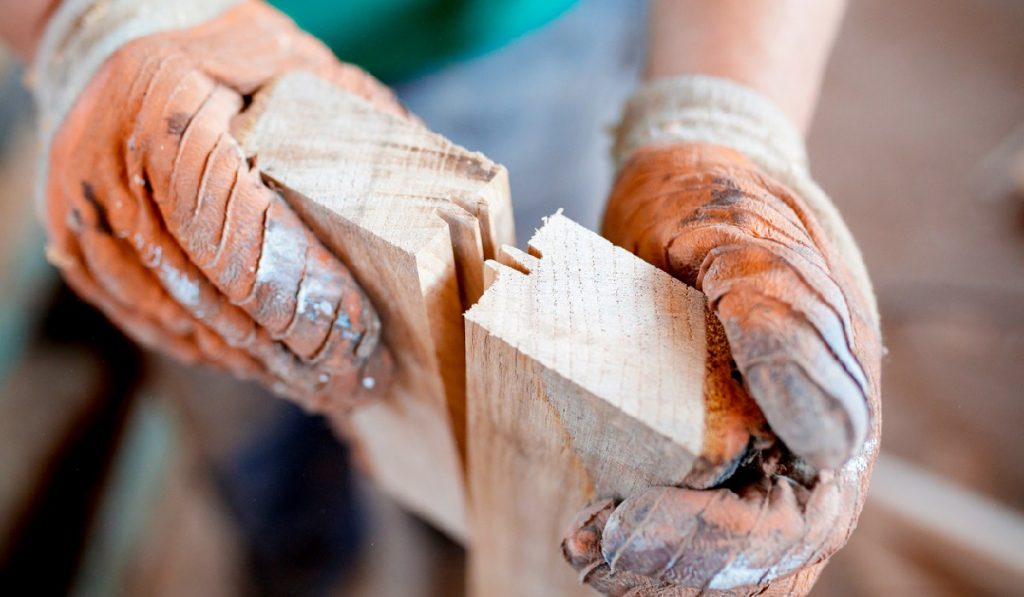Become a Skilled Woodworker by Mastering These 5 Types of Wood Joints

Learning the art of woodworking can be a rewarding experience. Not only do you get to create beautiful and unique pieces, but you’ll also learn the essential skill of creating strong and durable joints. Joints are a crucial part of any woodworking project, as they are the foundation of the structure and provide strength and stability.
We’ll discuss five of the most common wood joints and how to create them properly. We’ll also provide helpful tips for ensuring your joints are strong and secure. From the simple butt joint to the more complicated dovetails, once you have mastery over these five types of wood joints, you’ll be on your way to becoming a skilled woodworker.
Essential Woodworking Tools
Woodworking can be a craft that takes considerable skill and precision to master. To make the process as easy and efficient as possible, woodworkers should have a few essential tools before beginning a project. A few basic tools include a hammer, saw, chisels, router, drill, clamps, and laser level. Having these handy makes any job faster and easier.
Five Essential Wood Joints
Once you have the right tools for the job, it is critical to understand how to use them effectively. Each joint has its unique qualities and advantages when used in woodworking.
(1) Rabbet Joints
A rabbet joint is made by cutting a groove with a saw or router along the edge of one piece of wood and then inserting another component into the groove. It can attach two pieces of wood at a right angle to each other or create a frame around an object.
(2) Dado Joints
A dado joint is created by cutting slots in two pieces of wood and then joining them together. This option is an excellent joint for making cabinets or other items that require stability in an L shape.
(3) Mortise and Tenon Joints
Mortise and tenon joints are similar to rabbet joints but require more accuracy to be effective. The tenon, or male part, fits inside a mortise, or female portion, creating a tight fit between the two pieces of wood. This joint is perfect for furniture, such as chairs or tables, that require a lot of support.
(4) Dowel Joints
Dowel joints use cylindrical pieces of wood called dowels to hold two pieces of wood together in place. These are perfect for making frames or boxes where precision is less important than strength.
(5) Tongue-and-Groove Joints
Tongue-and-groove joints create a seamless connection between two pieces of wood. The “tongue” portion fits into a “groove” in the other piece of wood, which locks them into place. This type of joint can create cabinets or shelves with tight connections between the two pieces that you can remove easily when necessary.
Tips and Tricks for Creating Each Joint
Creating each type of joint requires skill, accuracy, and a few tricks to get the most out of each type. When creating rabbet joints, a laser level will help line up the pieces perfectly, so there is no chance of misalignment when attaching them. For dado joints, ensure your saw blade is sharp before cutting, or you won’t get clean edges on your slots. With mortise and tenon joints, use a drill press or router to ensure accuracy when cutting the mating parts so they fit together snugly. For dowel joints, double-check your measurements before drilling so your dowels fit properly and don’t produce wobbly results. When creating tongue-and-groove joints, mark exactly where your cuts need to go so you have plenty of room for alignment problems once you begin assembly.
Conclusion
With practice and patience, anyone can become an expert woodworker. All it takes is a little hard work and instruction regarding the basic techniques. Using these five essential types of wood joints will help you create long-lasting projects that you can be proud of for years to come.
